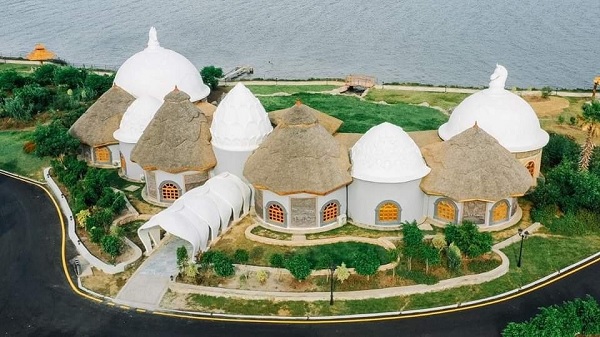
Before things changed to normal and all the challenges encountered turned into multiple opportunities, no one was visionary enough to think about the possibility of extracting something new from Lake Beseqa, which was once a public threat but has now become a tangible opportunity.
Lake Beseqa is one of the Rift Valley Lakes located to the Northeast in the Fentale district, approximately 230 km from the Central Rift Valley Cluster Lakes. Its exact location is 210 km East of Finfinne, adjacent to Metahara town.
It is a small saline lake that offers lake scenery and some aquatic bird viewing, especially pelicans. What makes it unique is that it was not formed by the drainage of watershed collected in a deep basin, but emerged on flat land from underground water.
The lake had no natural outflows and has expanded dramatically in size since the 1960s due to factors such as groundwater discharge, inflow from hot springs, and excess irrigation water joining the lake through subsurface flows.
Once upon a time, when this writer visited the lake, it was continuing its expansion and was a significant challenge for surrounding communities and various stakeholder groups. The writer witnessed the lake submerging even government institutions, including schools and hospitals.
At that time, there were attempts to slow the expansion of the lake, and a two-tunnel system was built to release excess water from the lake into the Awash River. This saved the nearby upstream town of Metehara from being submerged. However, sulfuric and saline water from the lake have also affected the river’s water quality, impacting farmers and agro-pastoralists downstream by aggravating soil salinity and reducing farm yields.
Due to the daunting challenge, Hotels and households began to leave Metehara town out of fear of being submerged by the expanding lake. Experts suggested that addressing these challenges requires considering the complex interconnectedness of the Awash Basin, the lake, its users, and its history.
At that instant, no one wanted to be farsighted and observe the opportunities that the lake brings to the surrounding community, except to talk about the challenges they faced. Some mentioned the possibility of generating 50MW of electricity power, but they quickly dismissed this idea, claiming that the cost outweighed the benefits that could be gained from the lake. Until the new government led by Prime Minister Abiy came to power, without exaggeration, no one dreamed of transforming the place into a tourist attraction.
When the real sons and daughters of this country saw the lake not as a challenge but as an opportunity, they brought about a plan that transformed the previous environment into an amazing tourist destination. Within a short period of time, the reform government turned this magnificent plan into a reality. Recently, the Office of the Prime Minister (PMO) announced the launching of the hidden gem of Lake Beseka, a secret called ‘Beynouna Village.’
“Today, we unveil the hidden gem of Lake Beseka: a secret called ‘Beynouna Village,” the Office revealed.
Beynouna Village is a unique getaway that has undergone a remarkable transformation from a landscape of volcanic remnants into a peaceful retreat and flourishing green farmland. Located near the town of Metehara and proximate to Awash National Park, Beynouna Village is a popular destination that combines traditional architecture with modern construction, creating more tourism potential for the area.
Prime Minister Abiy, speaking at the inaugural ceremony, noted that the area where Beynouna Village is located has a very difficult climate and landscape. However, he stated that it was possible to realize this stunning village by coping with these challenges.
Beynouna Village stands as a testament to the belief that anything is possible, the premier underscored.
Apart from entertainment facilities, the village also includes fruit cultivation and the development endeavors of the Bounty of the Basket Initiative, drawing important lessons linking agriculture with tourism destinations.
The cultivation of oranges, lemons, papaya, mangoes, as well as livestock development of chickens, camels, cattle, and goats is being carried out in the village.
Prime Minister Abiy, in a social media post, stated, “We will build on our efforts in the tourism sector and continue showcasing Ethiopia to the world.”
The construction of the village has been carried out through collaborative efforts between the governments of Ethiopia and the UAE, as well as the private sector.
The Prime Minister announced that the management of the village will be handed over to the Skylight Hotel.
Looking at the ongoing development efforts and witnessing the struggles of the Ethiopian government with nature, one can easily predict a prosperous future for the country. In addition to identifying untapped potential, it is imperative to promote both developed and underdeveloped facilities that will play a significant role in advancing Ethiopia’s economic growth and enhancing its reputation. In order to continue this development effort, the hands of partners must continue to be extended to further accelerate the ongoing growth and development.
BY GIRMACHEW GASHAW
THE ETHIOPIAN HERALD WEDNESDAY 13 NOVEMBER 2024




